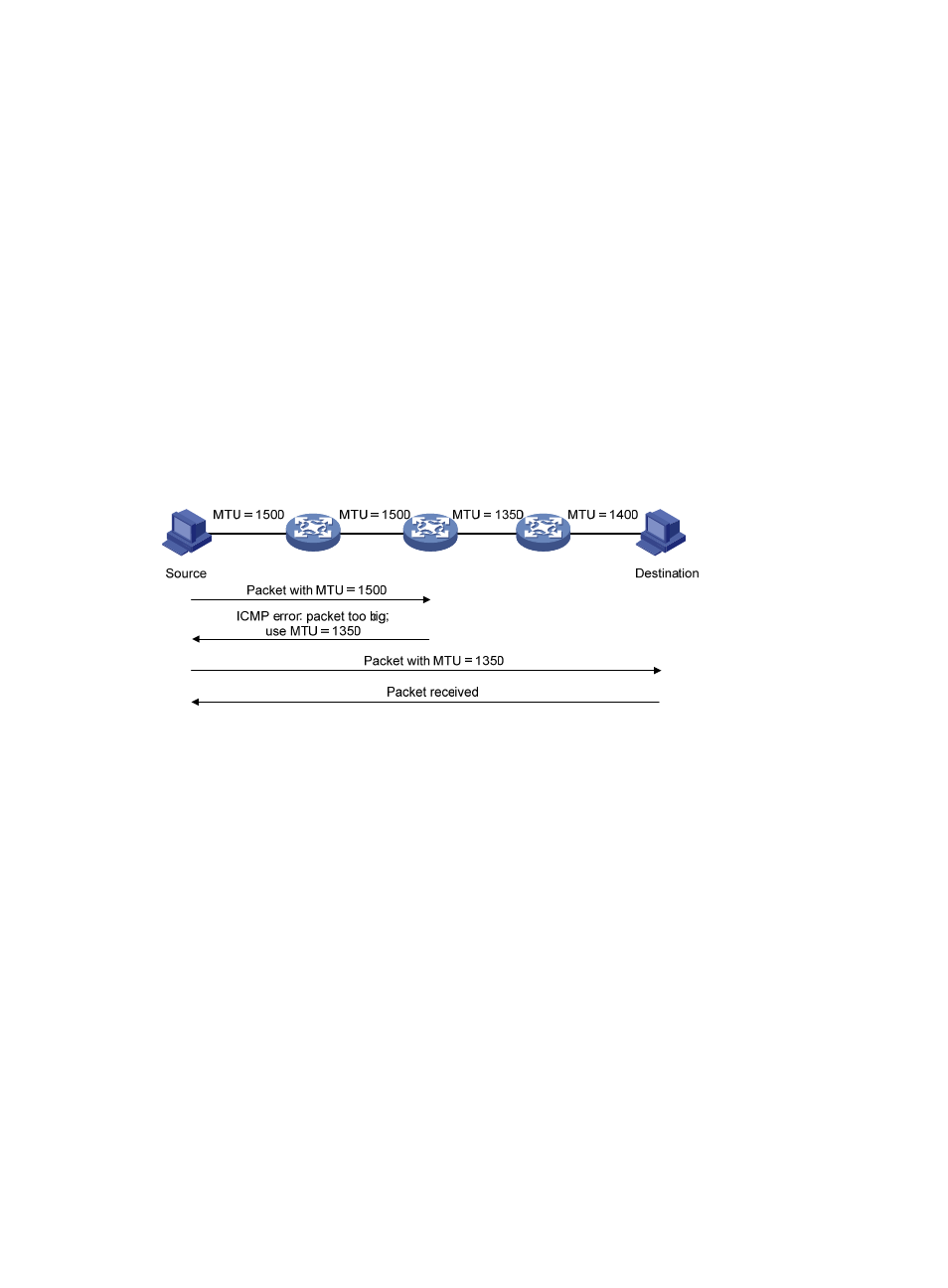Ipv6 transition technologies, Ipv6 path mtu discovery, Dual stack – H3C Technologies H3C S12500 Series Switches User Manual
Page 122

109
387B
Redirection
Upon receiving a packet from a host, the gateway sends an ICMPv6 Redirect message to inform a better
next hop to the host when the following conditions are satisfied (similar to the ICMP redirection function
in IPv4):
•
The interface receiving the packet is the same as the interface forwarding the packet.
•
The selected route is not created or modified by an ICMPv6 Redirect message.
•
The selected route is not a default route on the device.
•
The forwarded IPv6 packet does not contain the routing extension header.
254B
IPv6 path MTU discovery
The links that a packet passes from a source to a destination can have different MTUs, among which the
minimum MTU is the path MTU. If a packet exceeds path MTU, the source end fragments the packet to
reduce the processing pressure on intermediate devices and to use network resources effectively.
A source end uses path MTU discovery to find the path MTU to a destination, as shown in
753H
Figure 45
.
Figure 45 Path MTU discovery process
1.
The source host sends a packet no larger than its MTU to the destination host.
2.
If the MTU of a device's output interface is smaller than the packet, the device discards the packet
and returns an ICMPv6 error packet containing the interface MTU to the source host.
3.
After receiving the ICMPv6 error packet, the source host uses the returned MTU to limit the packet
size, performs fragmentation, and sends the packets to the destination host.
4.
Step 2 and step 3 are repeated until the destination host receives the packet. In this way, the
source host finds the minimum MTU of all links in the path to the destination host.
116B
IPv6 transition technologies
IPv6 transition technologies enable communication between IPv4 and IPv6 networks. Several IPv6
transition technologies can be used in different environments and periods, such as dual stack (RFC 2893),
tunneling (RFC 2893), NAT-PT (RFC 2766), and IPv6 on the provider edge routers (6PE).
255B
Dual stack
Dual stack is the most direct transition approach. A network node that supports both IPv4 and IPv6 is a
dual-stack node. A dual-stack node configured with an IPv4 address and an IPv6 address can forward
both IPv4 and IPv6 packets. An application that supports both IPv4 and IPv6 prefers IPv6 at the network
layer. Dual stack is suitable for communication between IPv4 nodes or between IPv6 nodes. It is the basis